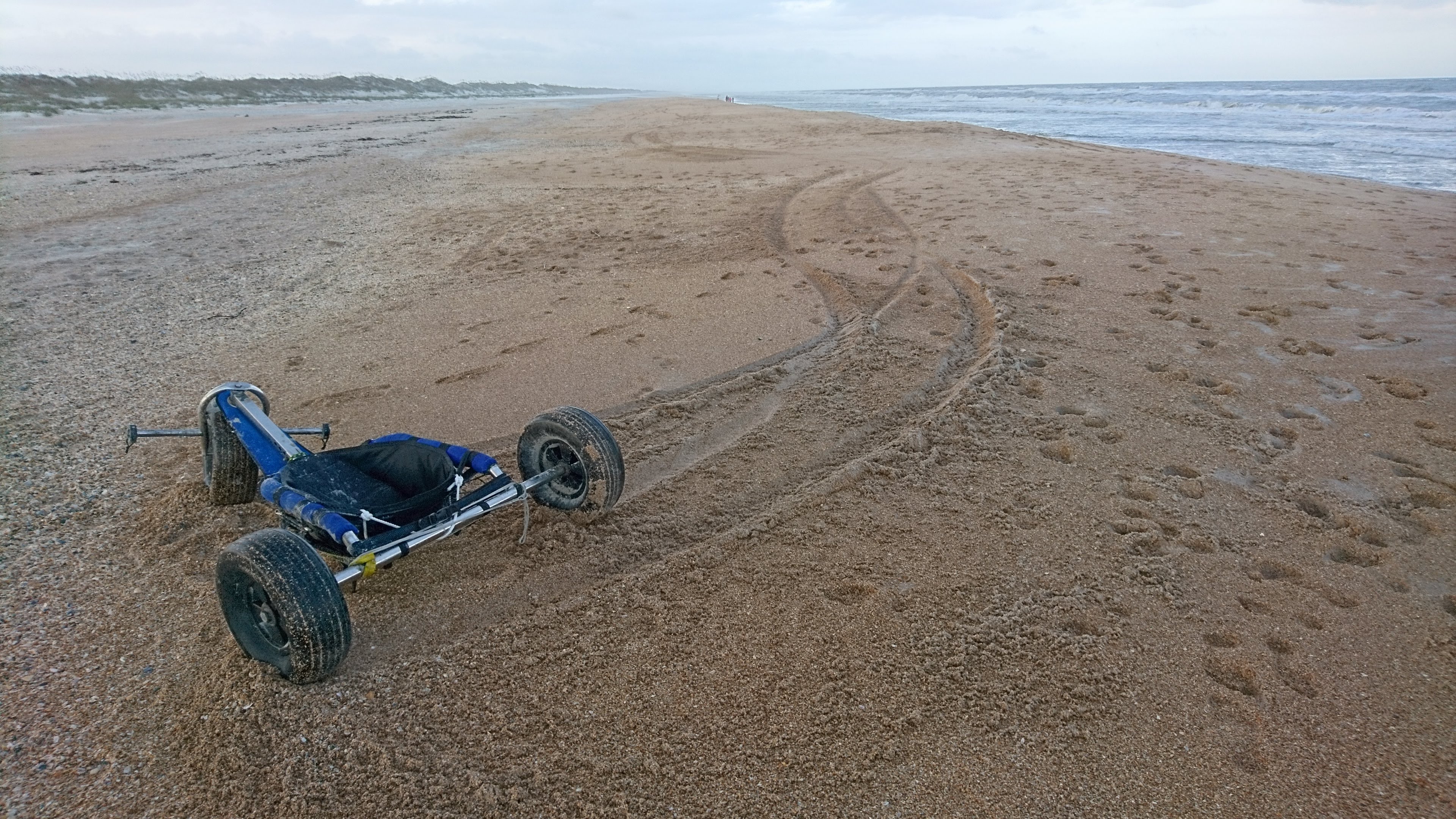Harness and Quick-Release upgrades
Updating the snap shackle
In Replacing the chickenloop I wrote about my move away from the classic chicken loop and hook attachment popular in the kitesurfing community. Eliminating the chicken loop and harness hook has proven to be a great way to bring the bar closer to my body’s center while simplifying my bars. Yet I have seen a weakness in the design during testing. The handles I use to trigger the release of the Wichard snap shackle would sometimes trigger an inadvertent release of the snap shackle. The problem would generally occur during tacks and jibes when the snap shackle and handles were forced against my thigh. If the base of the handle caught on my pants it could pull the cord tight and pull the opposite handle into the gate.
This has happened on my Wichard snap shackles with at least four different handle designs. While I have managed to reduce the problem with new designs, it still exists. What’s more, the plastic cones for the Wichard snap shackles chip and wear under duress. I’ve come to the conclusion that I am asking the Wichard snap shackles to do something they are not designed to do.
To address the persistent problems with inadvertent releases, I swapped out the Wichard snap shackle for a Tylaska T5 snap shackle. These snap shackles are designed to be released with a cone-shaped shackle fid. Tylaska sells a half-cone fid with a center hole that allows a lanyard passed through the hole to pull the fid into the trigger. The picture below shows a pair of these fids assembled with a T5 snap shackle so that the shackle can be triggered from either side.

In a 2 hour test of continuous tacking and jibing, I did not have a single unplanned release. The design is simple. Aside from a small tether attached to the back of the shackle, it uses only off-the-shelf components. That tether serves as an anchor point for the elastic flag lines I use on many of my bars. As the tether is above the swivel, it is completely compatible with the swivel. Its positioning opposite the shackle’s gate keeps the flag line out of the way of the gate.
Updating the harness
As the Wichard snap shackle uses a solid bail, I had to unpick my old harness to swap in the Tylaska shackle. I took the opportunity to redesign my harness to improve the fit and address some issues I had with the old harness. The old harness spun the waistband considerably during tacks and jibes. Under load, this repeated spinning would wear on my hips. The new design moves the shackle down to the center of the figure-eight defined by the two leg loops. This does a better job of transferring the lateral load directly to the legs.
At the front center of the harness, there are two layers of 2-inch webbing. As two layers of webbing are too much material to fit through the clevis of the shackle, I attached the clevis only to the front layer. The front layer is firmly affixed to the back layers and the leg loops by the stitching on the ends of the legs loops left and right of the front center of the harness. To reduce the lateral movement of the shackle on the front face of the harness, the shackle is pinned between two stitched tack points that join the front and back layer. The back layer also provides a bit of padding between the clevis and the belly.

The harness design incorporates elastic between the back of the leg loops and the backside of the waistband. This keeps the leg loops from sagging while keeping the waistband from riding up. This harness incorporates a short elastic leash that runs around the back to keep tension on the non-elastic flag lines used in some of my bars. This leash does not allow you to use the snap shackle’s swivel, but it can keep most any flag line tensioned.
The leash is tethered via a quick release pin on the front side of the right hip. This allows for the complete release of a flagged kite. The ultimate goal is to convert all of my bars to elastic flag lines so I can dispense with the leash entirely.

